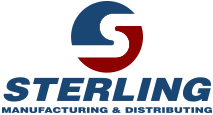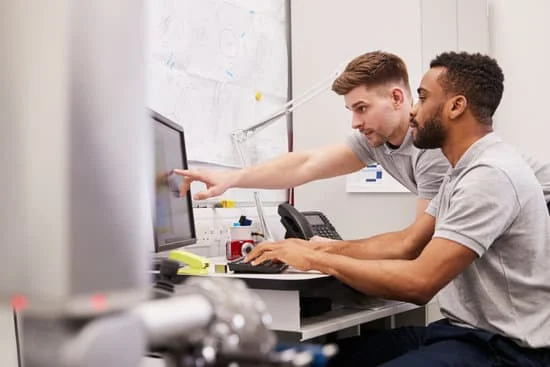In the world of product protection and shipping, foam packaging plays a pivotal role, and behind every carefully crafted piece of foam lies a complex array of engineering processes and innovations.
“Even engineers in the know who appreciate foam for its wide range of characteristics and capabilities are often unaware how versatile it can be and how best to use it,” says the publication Machine Design. “And if you don’t know much about foam, working with it can be tricky — from selecting the right material for an application to die-cutting to meet the design. In most cases, working with foam requires partnering with a materials converter experienced in the varieties and capabilities of foam.
For over five decades, Sterling Manufacturing & Distributing in Houston, Texas has been at the forefront of this industry, designing and manufacturing custom foam for products used worldwide.
This article explores the intricate role engineering plays in foam packaging manufacturing, showcasing how expertise and innovation combine to create solutions that meet and exceed customer expectations.
The Foundation: Types of Foam in Packaging
Before we dive into the engineering aspects, it’s essential to understand the materials at play. Engineers work with various types of foam, each with unique properties:
- Expandable Polystyrene (EPS): Lightweight and rigid, EPS comes in a wide range of densities, from very low-density (used for packaging) to high-density (use for construction). EPS has excellent insulation properties, is relatively inexpensive, and provides good shock absorption.
- Polyethylene (PE) foam: Available in extruded and laminated forms, with both low-density (LDPE) and high-density (HDPE) forms. PE is flexible (especially LDPE), water-resistant and provides good cushioning support.
- Polyurethane (PU) foam: Versatile, available in Ether and Ester variants. PU is a versatile material with a wide range of properties. PU has excellent insulation properties, provides good shock absorption, and can be customized to meet specific requirements.
- Ether vs. Ester: Ether-base PU foam has higher flexibility and lower flammability while providing better hydrolytic resistance. Ester-based PU foam has higher density and better adhesion while providing higher reactivity during the curing process. Choosing between the two depends on the specific requirements of your application.
Sterling Manufacturing’s expertise spans these materials and more, allowing them to select the perfect foam type for each project’s specific requirements.
Engineering Disciplines: A Multifaceted Approach
Foam packaging manufacturing requires a collaborative effort from various engineering disciplines:
- Chemical Engineering: Chemical engineers play a vital role in formulating foam materials. Chemical engineers focus on formulating foam materials by developing compositions for EPS, PE, and PU, optimizing chemical reactions for expansion, and ensuring material stability and performance.
- Mechanical Engineering: Mechanical engineers focus on the physical aspects of foam production by designing extrusion and molding equipment for EPS and PE, creating custom tooling for specific shapes, and developing automated contour cutters.
- Materials Science Engineering: These specialists bridge the gap between chemistry and physics by analyzing foam properties at a molecular level, developing specialty foams like anti-static and anti-abrasive variants, and testing and validating foam performance for various applications.
- Industrial Engineers: Industrial engineers optimize the manufacturing process to improve efficiency, reduce costs, and ensure quality. They design layouts for manufacturing facilities, develop production schedules, and implement quality control measures.
These disciplines often work together in a collaborative effort to design and produce foam packaging that meets the needs of various industries while minimizing environmental impact.
Key Engineering Processes in Foam Manufacturing
The journey from raw materials to finished foam packaging involves several critical engineering processes:
- Material Selection and Formulation: Engineers carefully select materials based on end-product requirements such as shock absorption and thermal insulation.
- Extrusion and Expansion: This phase transforms raw materials into foam through processes like steam heat expansion for EPS and controlled extrusion for PE.
- Fabrication Techniques: Creating custom shapes requires specialized engineering techniques such as contour cutting using CAD-CAM driven machines.
- Quality Control and Testing: Engineers develop rigorous testing protocols including compression tests and thermal insulation evaluations to ensure quality.
Sterling Manufacturing’s Design & Testing department exemplifies this commitment to engineering excellence, ensuring each foam solution meets or exceeds industry standards.
Innovations Driving the Industry Forward
The field of foam packaging engineering is constantly evolving. Some key areas of innovation include:
- Sustainable Materials: Engineers are developing eco-friendly alternatives by exploring bio-based materials, such as plant-based polymers, and improving recyclability. Companies are exploring closed-loop systems where foam waste is collected, recycled, and used to produce new foam products.
- Advanced Fabrication Technologies: Leveraging technology like 3D modeling for precise custom shapes enhances design efficiency. Increasingly, automation and robotics are improving efficiency, reducing labor costs, and improving product quality. Nanotechnology is being used to develop foams with enhanced properties, such as improved insulation, shock absorption, and barrier properties.
- Smart Packaging Solutions: Incorporating Internet of Things (IoT) technology into foam packaging can provide real-time tracking and monitoring of products, improving supply chain visibility and reducing losses. Advanced foam materials and technologies are enabling the development of packaging solutions that can maintain specific temperature ranges, essential for products like pharmaceuticals and perishable goods.
- Customization and Personalization: Foam packaging can be customized to meet the specific needs of individual products and industries, improving product protection and reducing packaging waste. Foam packaging can also be used to deliver personalized messages to consumers, enhancing the overall customer experience.
These innovations are driving the foam packaging industry toward a more sustainable, efficient, and customer-centric future. As technology continues to advance, we can expect to see even more innovative solutions emerging in the years to come.
Challenges and Future Trends
Despite significant strides, the foam packaging industry faces challenges such as balancing performance with sustainability. Future trends shaping the industry include:
- Integrated Packaging Solutions: Combining different foam types for optimal protection alongside developing “smart” packaging with embedded sensors.
- Advanced Material Science: Creating foams with self-healing properties and hybrid materials that combine foam with other substrates.
- Industry 4.0 Integration: Implementing AI-driven quality control systems to enhance production efficiency.
Sterling: Engineering Excellence in Every Piece of Foam
The role of engineering in foam packaging manufacturing is both complex and crucial. From material selection to final product testing, engineers drive innovation at every step.
Companies like Sterling Manufacturing exemplify this commitment to excellence, by combining multidisciplinary engineering expertise with a deep understanding of client needs to deliver top-quality foam solutions tailored to specific requirements.
As the industry evolves, embracing emerging technologies will further highlight engineering’s importance in creating innovative foam packaging solutions that protect products effectively while pushing boundaries.
Sterling’s dedication ensures they consistently exceed customer expectations through their state-of-the-art fabrication techniques and comprehensive design capabilities.
Contact Sterling today to learn more about how our foam packaging services and custom foam fabrication services can help your business succeed.


